This Land is Our Land
Briefly, Responsibly, Humbly
Wonder, awe, respect—conflict, abuse, greed. All these have characterized humans relationship with nature. Is there a way to bridge the gap?
We can only value what we know, and these books invite us to immerse ourselves in nature, to tune in to the ancient awareness coded in our DNA—that the natural world is our home—and then to cherish and protect that world as if our lives depended on it—because they do.
Wild Fierce Life
Dangerous Moments on the Outer Coast
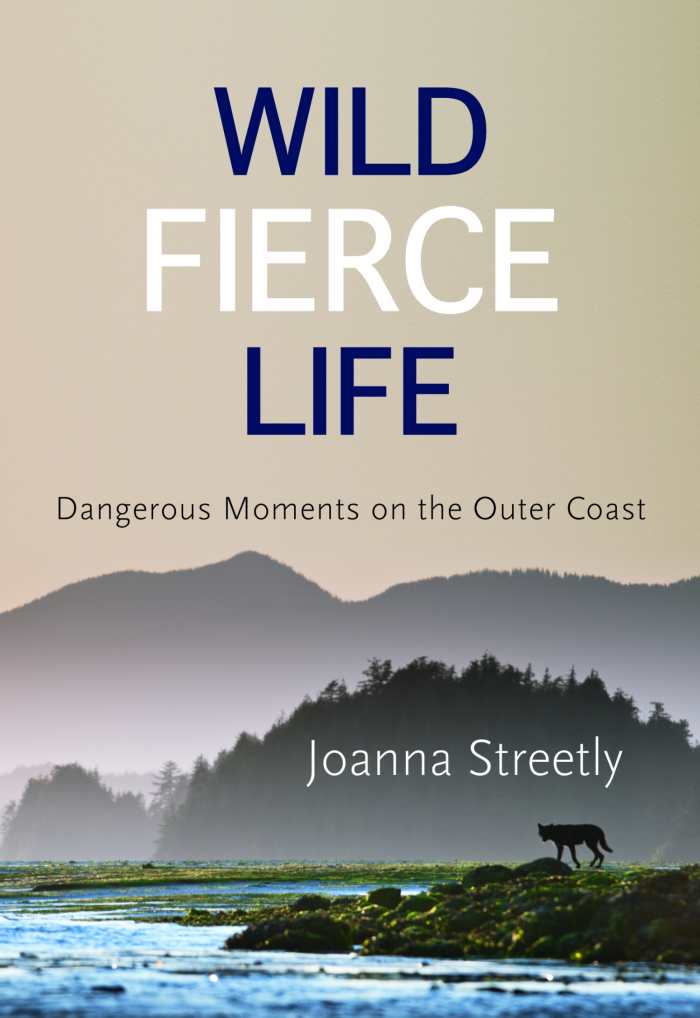
Joanna Streetly
Caitlin Press
Softcover $22.95 (224pp)
978-1-987915-65-5
Buy: Local Bookstore (Bookshop)
Joanna Streetly was just nineteen when she moved to Tofino, on the west coast of Vancouver Island. “It was a time before the technology explosion, when boats were expected to leak, or sink, and boat motors were expected to be fickle,” she writes. “It was an era uncomplicated by cellphones or GPS—or even wealth—when simply having a compass elevated me above those who approached the fog with mumbled prayers, or fingers crossed.” And it was a place that valued a good story.
Streetly’s memoir is filled with the raw intensity of life-or-death moments in the wild, and reflections on how they opened uncharted regions within her. Working as an outdoor guide, leading others on kayak or whale-watching tours, she learned the treachery of this wilderness: how islands that seemed like paradise in the summer were deadly in the winter, blasted by fierce storms.
She tells of being swept out to sea, facing likely death in the cold water, yet feeling only peace; of how lack of daylight and long periods of isolation could disrupt sleep and bring on hallucinations; of her surprise at finding herself swimming alongside a bear; and of fighting her need to prove herself equal to a man in facing challenges thrown at her by this untamed land.
She tells of her years partnered with a First Nations man, and the crumbling of both their float house and their relationship; of conflicts between white and aboriginal peoples; of a new relationship and the birth of a daughter; of learning to balance her fear for her child’s safety with the risk of destroying her delight in the wild.
She has given us good stories of breathtaking adventures, both beautifully crafted and enchanting.
KRISTINE MORRIS (April 27, 2018)
A North Country Almanac
Reflections of an Old-School Conservationist in a Modern World
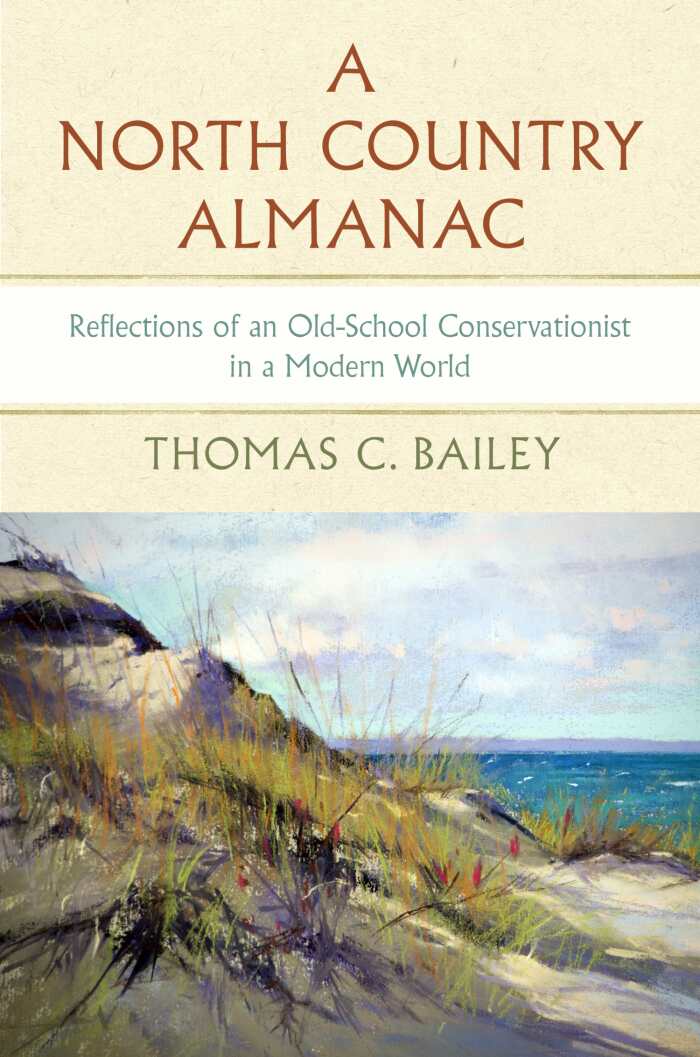
Thomas C. Bailey
Michigan State University Press
Hardcover $24.95 (126pp)
978-1-61186-286-7
Buy: Local Bookstore (Bookshop)
When people ask how he came to work in the field of conservation, Thomas C. Bailey has been known to respond that it was because, at the age of five, he saw a bald eagle. From then on, he was hooked. Growing up on the shores of Lake Superior with a father who was a wildlife biologist, Bailey has concern for the natural world in his blood.
While still in high school, he spoke before the US Senate Interior Committee in favor of declaring Michigan’s Isle Royale National Park a federal wilderness. He has since had a long career devoted to the care and preservation of the environment, most recently as the executive director of northern Michigan’s Little Traverse Conservancy, where he was known for his ability to bring together people of widely divergent political views to rally around issues they have in common.
“Some of our area’s most notorious environmentalists, as well as the most notorious developers, serve on our board of trustees,” he writes, calling the land conservancy movement a “ray of light” in a public policy landscape marked by contention and name-calling.
Bailey’s essays touch on topics as diverse as hunting; the effect of property taxes on land and land ownership; how taking a more sensitive, even shamanistic, approach to the land could counter current extractive and abusive practices; and how contact with nature is important to human health and well-being and is a shaper of our character and culture.
Bailey warns that the sacrifice of irreplaceable wild lands for short-term profit is both foolish and irresponsible; the private conservation movement, he writes, “has a key role to play in keeping nature close at hand to remind us all who we are and from whence we came.”
KRISTINE MORRIS (April 27, 2018)
Rising
Dispatches from the New American Shore
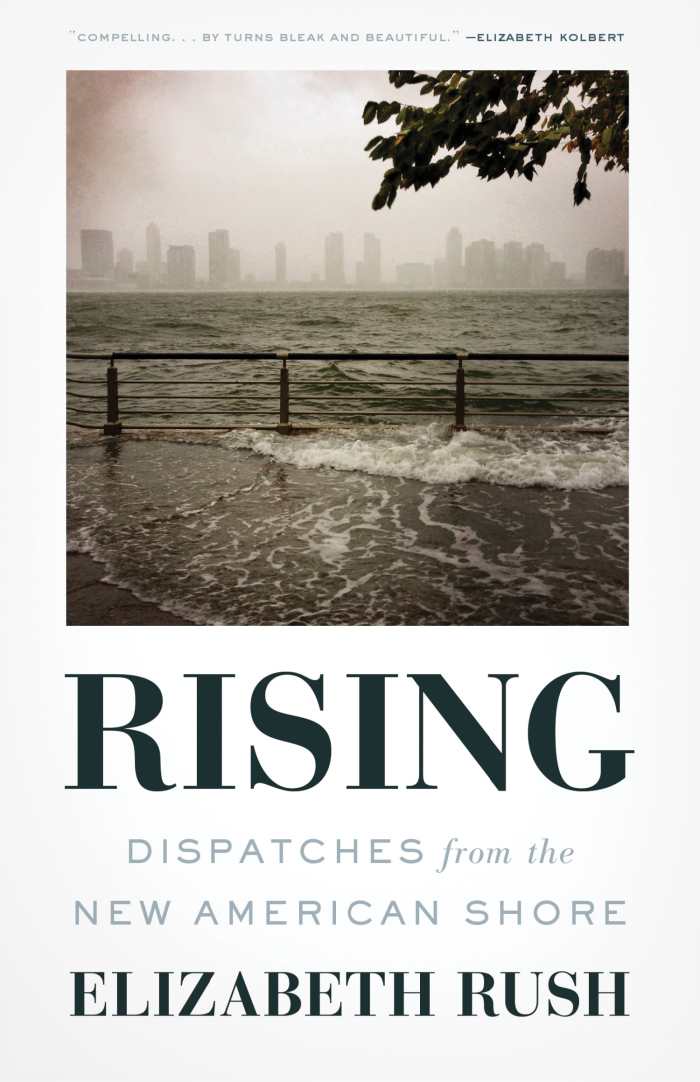
Elizabeth Rush
Milkweed Editions
Hardcover $26.00 (320pp)
978-1-57131-367-6
Obsessed with the rate of sea-level rise, environmental writer Elizabeth Rush traveled extensively along the US coasts and as far afield as Bangladesh, interviewing concerned scientists and coastal dwellers directly affected by devastating floods and catastrophic storms.
Her conclusion: the future we feared is already here. In the time it has taken to write this book, the sea level’s predicted end-of-century rise has doubled. “If sea level rise continues to accelerate at even half this speed we are looking at a rise of well over ten feet in the next eighty years,” she writes.
Scientists have found that Earth’s climate doesn’t change slowly and steadily. Instead, the transition from ice age to greenhouse conditions and back again is often rapid and dramatic. It has happened before, but this is the first time that humans will be here to see it. And it won’t be pretty.
The prediction is that by 2050 there will be two hundred million refugees worldwide due to climate change that has been exacerbated by human intervention in the landscape. Of these, two million will be from the state of Louisiana, whose southern edge is eroding at a rate that’s among the fastest on the planet.
Rush explains the role of thriving wetlands and tidal marshes in securing coastal land and in providing habitat for threatened or endangered species, and how short-sighted laws have allowed filling and hardscaping them for economic gain. In response, coastal animals and insects are relocating, and even plants are moving inland, slowly stretching their rhizomes away from the sea.
What Rush lays before us in her book is extremely disturbing: that our only hope appears to be retreat—evacuation of the coasts and relocation of the things we value—and that we must take radical, even unthinkable, action at once.
KRISTINE MORRIS (April 27, 2018)
Gunflint Burning
Fire in the Boundary Waters

Cary J. Griffith
University of Minnesota Press
Hardcover $25.95 (304pp)
978-1-5179-0341-1
May 5, 2007, was a day like any other in Steve Posniak’s beloved Boundary Waters, except for one thing: the weather.
Low humidity, higher-than-normal daytime temperatures, and robust winds made the area ripe for wildfires. Not the most careful of campers, Posniak, whose custom it was to burn all his paper trash before leaving his campsite, ignored the warnings he’d received, lit his fire, and went into his tent to pack up his things. By the time he came out, embers carried by the wind had spread the fire beyond his ability to contain it, and the Ham Lake Fire, one of the largest and most destructive fires in Minnesota history, began its onslaught. It was to burn an estimated 75,551 acres before it was finally subdued.
Cary J. Griffith has given a cinema-worthy blow-by-blow account of the people, places, and events associated with the massive wildfire as area residents, resort owners, and volunteer and professional firefighters choreographed their efforts to fight the inferno.
Despite evacuation orders, not everyone was willing to leave their homes and businesses, choosing instead to work together with friends, neighbors, and firefighters to salvage what they could. Manning his hoses and sprinklers, seventy-six-year-old Bob Monehan reported that “the whole world was on fire, covered in smoke and flame.” The roar of the inferno was so loud that it would have been impossible to hear a person standing right next to him screaming. Fortunately, his home was spared.
A tribute to all those who work to protect and preserve our forests, property, and lives by putting their own lives on the line, the book is also a stark reminder that a moment of carelessness can result in epic devastation.
KRISTINE MORRIS (April 27, 2018)
By the Shore
Explore the Pacific Northwest Coast like a Local
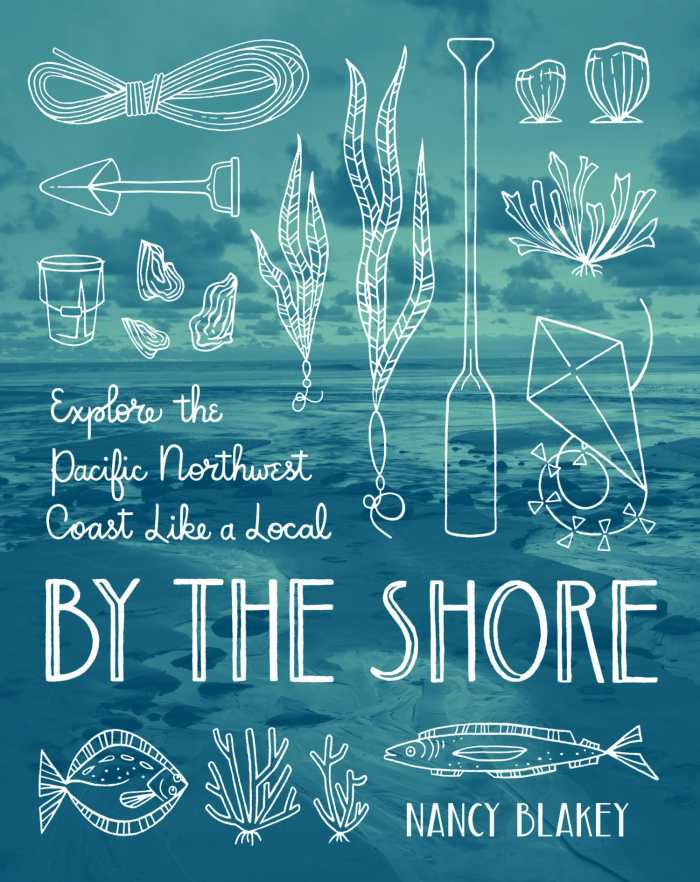
Nancy Blakey
Sasquatch Books
Softcover $22.95 (256pp)
978-1-63217-143-6
If you’re looking for a guide to all things Pacific Northwest that’s just about perfect, this is it.
Author Nancy Blakey offers a wealth of information, from a description of the exquisite “sound of silence” at the Hoh Rain Forest’s One Square Inch of Silence to all you’ve ever wanted to know (and more) about salmon, crabs, and clams and how to catch, clean, and cook them.
Though she lived with her family on Bainbridge Island, Blakey’s busy life kept her time outdoors limited to walking her dog. One day, she was startled to realize that she was missing out on all the beauty and adventure that surrounded her.
The result was this book, filled with awe-inspiring photographs; useful and fun illustrations; maps and directions that highlight what you’ll most want to experience; suggestions on where to eat, and even what to order when you get there; fun projects to do with children; sea-inspired arts and crafts; scrumptious recipes; rules and regulations to be aware of; lists of all you’ll need for the activities you choose; and warnings to keep you safe and healthy as you enjoy your trip. She’s even included the pronunciations of some unusual place-names, making it easier for you to sound like a local.
The book is divided by the seasons, making it easy to plan trips all year long; you’ll know what’s happening, what’s open and what’s not, and what you can expect from the weather no matter when you want to travel.
With Blakey as your guide, you’ll miss nothing; in fact, you’re likely to come away knowing more than the locals about the spectacular Pacific Northwest.
KRISTINE MORRIS (April 27, 2018)
The Ashokan Way
Landscape’s Path into Consciousness
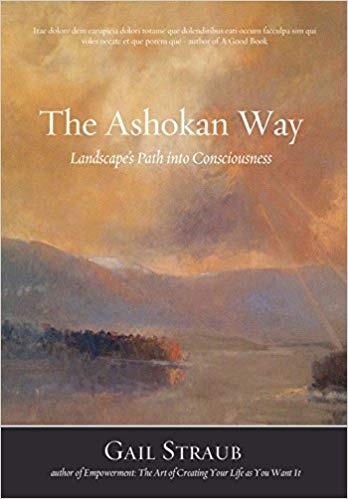
Gail Straub
Homebound Publications
Softcover $16.95 (194pp)
978-1-947003-69-9
Gail Straub’s contemplative walks along the Ashokan Reservoir, nestled among the Catskill Mountains, are chronicled in thirty-six poignant and heartfelt essays that are a feast for the senses. As the seasons change, moving through light and dark, calm and storm, birth and death, the landscape whispers ancient truths that teach, heal, and reshape her.
“In the company of this water and sky, these mountains, forests, and creatures, I feel a profound sense of sanctuary,” Straub, a social activist and peacemaker, writes. They ground her with their constancy, provide respite from noise and urgency, and remind her that the dharma is living one’s true nature. Inner and outer landscapes intertwine, enriching each other in a partnership akin to dance, the stability of the one allowing freedom for the other.
With a spirit open to embrace other creatures as kin, she observes a crow funeral with its own etiquette, ritual, and expressions of empathy. The drowning of a baby gosling in the reservoir’s turbulence is a reminder that while nature can nurture, it can also destroy, and we are subject to both.
Silence, solitude, open space, and contact with inner worlds through meditation and prayer are vital to her. “An ongoing bond with the unseen is essential to both my faith and my capacity to find hope in a dense and complex world,” she writes, inviting us to form such a bond with whatever landscape it is that surrounds us.
Lacking a connection with the natural world that awakens awe and astonishment and provides the air and water we need to survive, we are nothing more than “hungry ghosts,” obese with the nonstop chatter provided by our electronic devices. For real sustenance, The Ashokan Way advises three pathways: spiritual practice, the arts, and the natural landscape.
KRISTINE MORRIS (April 27, 2018)
Your Guide to Forest Bathing
Experience the Healing Power of Nature
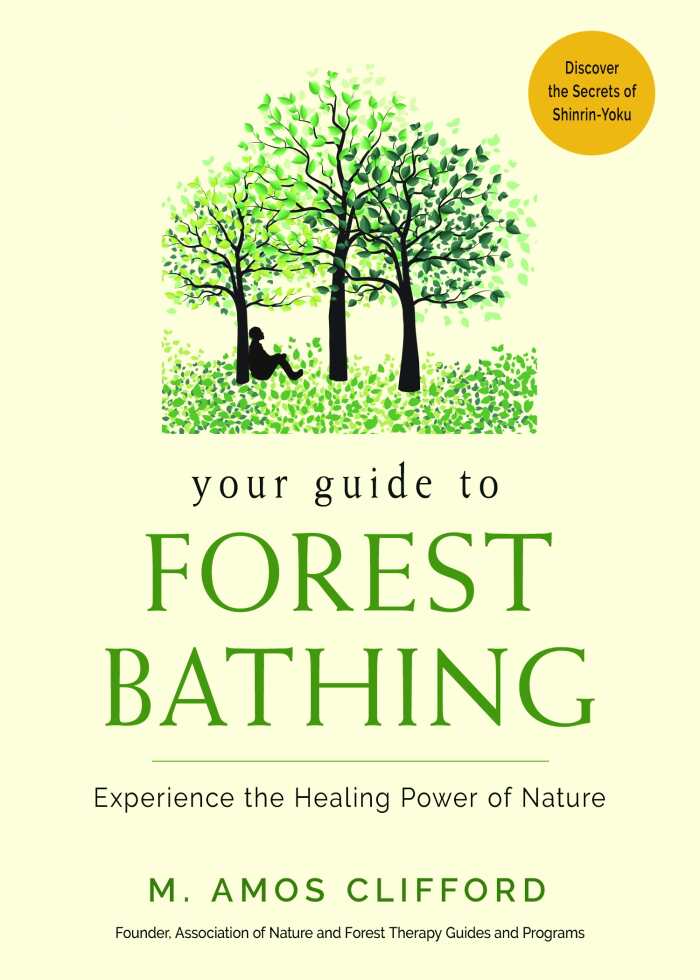
M. Amos Clifford
Conari Press
Softcover $14.95 (192pp)
978-1-57324-738-2
Deeply encoded in the human psyche is the awareness that comfort, peace, and healing can be found in a forest. The Japanese have a term for this: shinrin-yoku, or “forest bathing.” They have long understood that being in a forest is to immerse oneself in grace and beauty and to feel the healing power that exists in the exhalations of the trees.
M. Amos Clifford is a forest guide, psychotherapist, restorative justice worker, and longtime Zen meditation practitioner. His book is a beautiful exploration of forest bathing, a source of information on the medical and scientific evidence of its benefits, and a guide to all that’s needed for a fulfilling forest-bathing practice.
Evolutionary adaptation has not kept up with the rapid pace of change, leaving us vulnerable to stress, physical and mental illness, and fractured relationships with each other and with the natural world. Trees are slow, patient beings; keepers of history, they remind us of a slower, gentler way to live. “Forest bathing resets our nervous systems,” Clifford writes. “It does so quickly and effectively. It is as if we have come home.”
The benefits are reciprocal: we exhale the carbon dioxide that the trees breathe and in turn inhale their exhalations, shown by research to be a “rich mix of freshly minted oxygen and other aerosols that benefit our moods, our hearts, our mental capacities, our immune systems, and more.”
Estranged from the natural world, we’ve come to view trees as ornamental or as crops to be harvested for a price, but Clifford affirms that, deep in our DNA, we remember the power, beauty, and generosity of trees. “We deeply intuit that it is our birthright to recall their songs,” he writes.
KRISTINE MORRIS (April 27, 2018)
Orca
How We Came to Know and Love the Ocean’s Greatest Predator
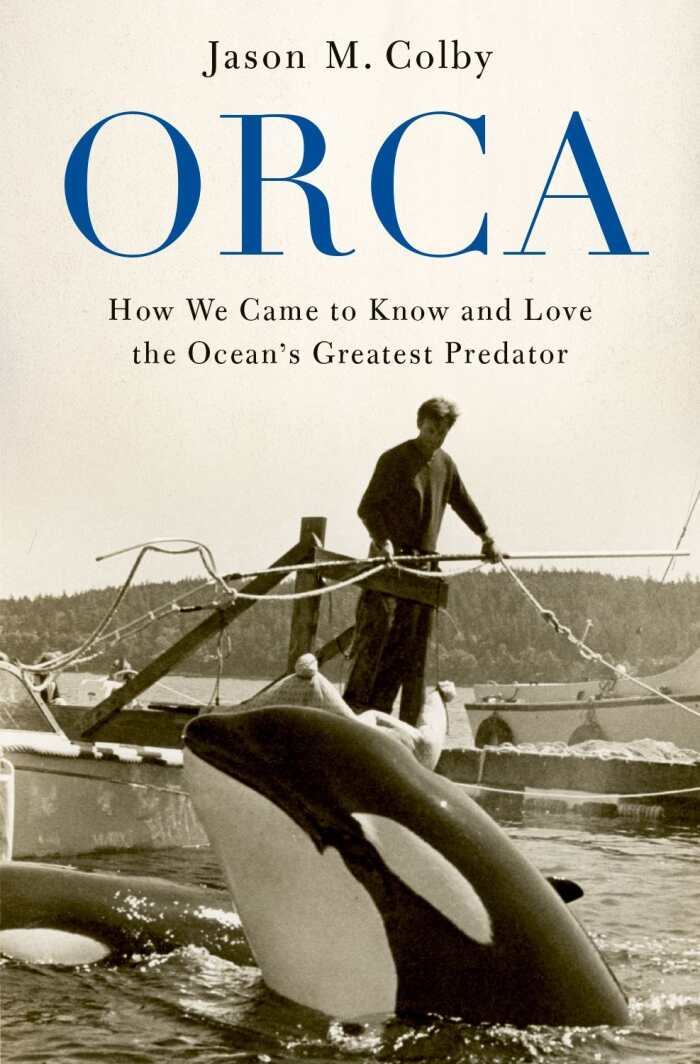
Jason M. Colby
Oxford University Press
Hardcover $29.95 (408pp)
978-0-19-067309-3
Buy: Local Bookstore (Bookshop)
“As a boy, I saw my dad cry on only three occasions,” writes Jason Colby. “One was his father’s funeral. The other two involved dead orcas.” Colby’s father had been in the business of capturing and selling killer whales for sale and display, but he, together with public opinion, turned against whale captivity. “Tell someone today that your father caught orcas for a living and you might as well declare him a slave trader,” Colby writes.
What turned the tide? Strangely enough, it was captivity. Orcas, also known as killer whales or blackfish, are the ocean’s greatest, most efficient predators, and had long been hated and feared. The Latin name Orcinus orca can be translated “demon from hell.” As far back as 79 CE, Pliny the Elder described the orca as “an enormous mass of flesh armed with teeth.”
But captive orcas gave scientists and the public a different perspective. Trained to respond to human direction, they have entertained audiences worldwide with their intelligence, beauty, grace, and power. They were found to be complex social beings with their own culture and dialects, strong family bonds, a sophisticated method of biosonar, and a cetacean version of ultrasound that allows them to “see” inside the bodies of other animals. They teach their young hunting strategies, and wild orcas have even cooperated with humans in the hunt for baleen whales.
Through interviews, public and private archives, official records, and previously unavailable information that includes his own family’s involvement in the conflicted, bloody history of the relationship between humans and orcas, Colby shines a light on how little we understand of these magnificent creatures. His book gives a glimpse into a mysterious yet strangely familiar world, brought to life in a story that’s tragic, heartbreaking, and finally hopeful.
KRISTINE MORRIS (April 27, 2018)
Kristine Morris

